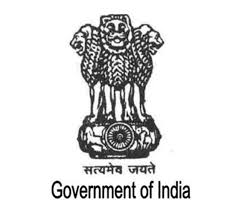The Indus Valley civilization, one of the world's oldest, flourished during the 3rd and 2nd millennia B.C. and extended into northwestern India. Aryan tribes from the northwest infiltrated the Indian subcontinent about 1500 B.C.; their merger with the earlier Dravidian inhabitants created the classical Indian culture. The Maurya Empire of the 4th and 3rd centuries B.C. - which reached its zenith under ASHOKA - united much of South Asia. The Golden Age ushered in by the Gupta dynasty (4th to 6th centuries A.D.) saw a flowering of Indian science, art, and culture. Islam spread across the subcontinent over a period of 700 years. In the 10th and 11th centuries, Turks and Afghans invaded India and established the Delhi Sultanate. In the early 16th century, the Emperor BABUR established the Mughal Dynasty, which ruled India for more than three centuries. European explorers began establishing footholds in India during the 16th century.
By the 19th century, Great Britain had become the dominant political power on the subcontinent. The British Indian Army played a vital role in both World Wars. Years of nonviolent resistance to British rule, led by Mohandas GANDHI and Jawaharlal NEHRU, eventually resulted in Indian independence, which was granted in 1947. Large-scale communal violence took place before and after the subcontinent partition into two separate states - India and Pakistan. The neighboring nations have fought three wars since independence, the last of which was in 1971 and resulted in East Pakistan becoming the separate nation of Bangladesh. India's nuclear weapons tests in 1998 emboldened Pakistan to conduct its own tests that same year. In November 2008, terrorists originating from Pakistan conducted a series of coordinated attacks in Mumbai, India's financial capital. Despite pressing problems such as significant overpopulation, environmental degradation, extensive poverty, and widespread corruption, economic growth following the launch of economic reforms in 1991 and a massive youthful population are driving India's emergence as a regional and global power.
India is a federal parliamentary republic.
Source: CIA World Factbook
Members:
Resources
Displaying 41 - 45 of 91Land Related Issues
It is in this spirit that the Second Administrative Reforms commission (ARc) in its Report on capacity building for conflict Resolution has tried to examine the background and emerging facets of the many conflicts that plague India.
State of the Environment Report Orissa
State of Environment Report Orissa is prepared by Environmental Information System (ENVIS) Orissa, India
This report presents Orissa's environmental status and data relating to forest resources, forest profile, climate, biodiversity, demography, cropping pattern and ecology.
This report also provides other information of the state like economy, health, power and population.
The National Rehabilitation and Resettlement Policy, 2007
The Rehabilitation and Resettlement Bill, 2007 provides for benefits and compensation to people displaced by land acquisition purchases or any other involuntary displacement. The Bill creates project-specific, state and national authorities to formulate, implement, and monitor the rehabilitation and resettlement process.
The Scheduled Tribes and Other Traditional Forest Dwellers (Recognition of Forest Rights) Act
"An Act to recognise and vest the forest rights and occupation in forest land in forestdw~ing Scheduled Tribes and other traditional forest dwellers who have been residing in such forests for generations but whose rights could not be recorded; to provide for a framework for recording the forest rights so vested and the nature of evidence required for such recognition and vesting in respect of forest land"
The Scheduled Tribes and Other Traditional Forest Dwellers (Recognition of Forest Rights) Act
"An Act to recognise and vest the forest rights and occupation in forest land in forestdw~ing Scheduled Tribes and other traditional forest dwellers who have been residing in such forests for generations but whose rights could not be recorded; to provide for a framework for recording the forest rights so vested and the nature of evidence required for such recognition and vesting in respect of forest land"


